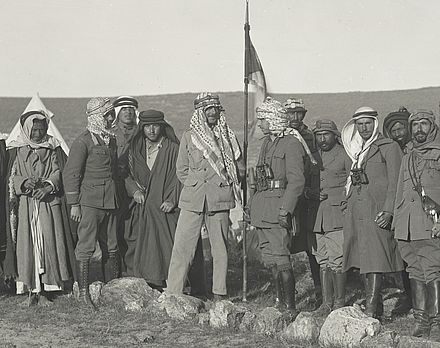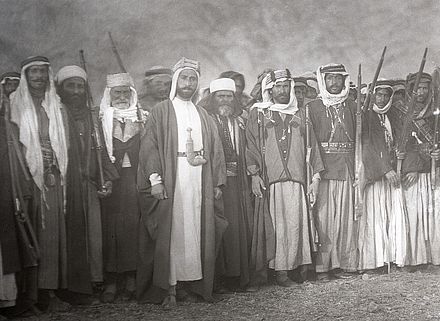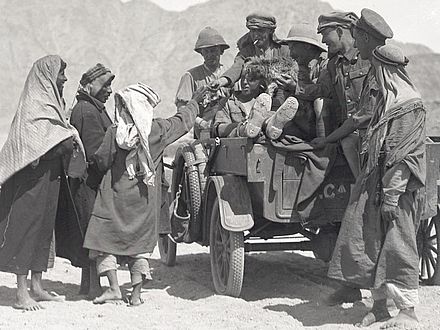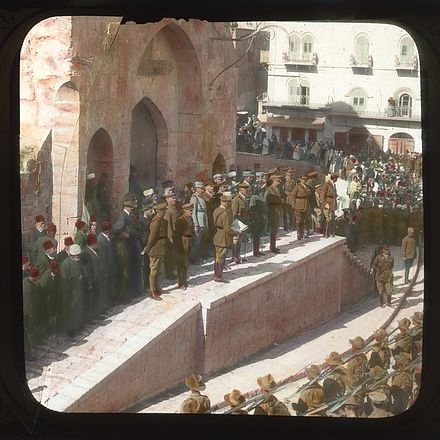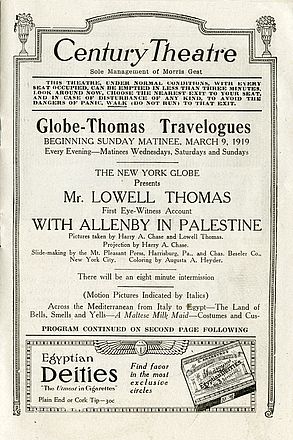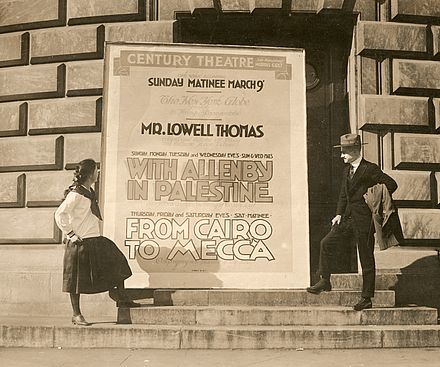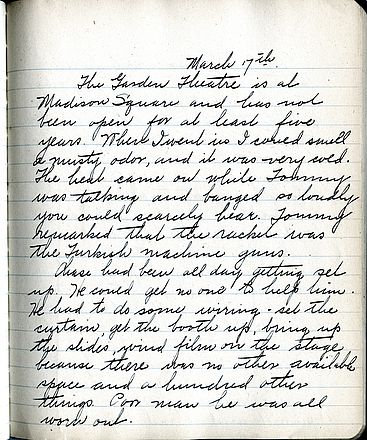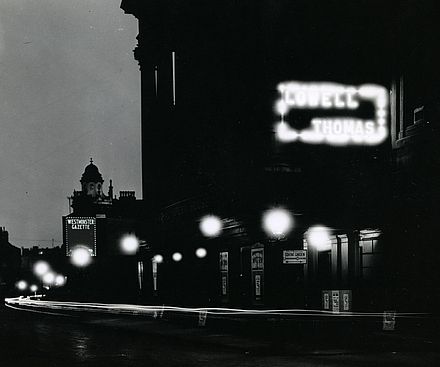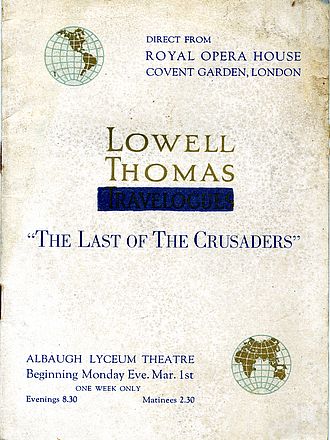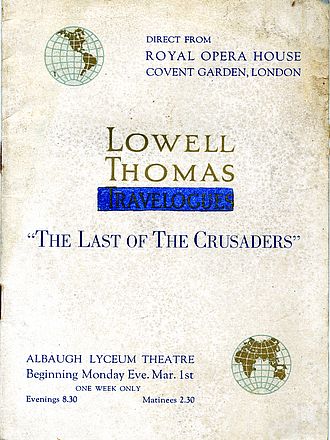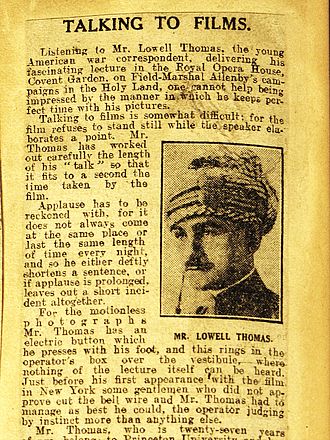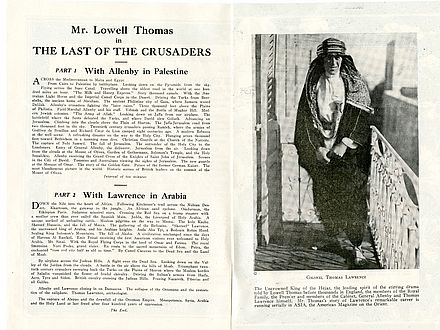A Groundbreaking Production
From that May in Akaba it took Thomas nine months and many adventures to get back to America with his films and photographs, and by that time the war had ended. In order to use these films and tell his story, Thomas invented a multimedia production that constituted what is arguably the first narrated documentary.
Returning with thousands of glass plate photos, reels of film and many stories from World War I to tell, Thomas’ first challenge was to come up with a way to present them that would draw people. There had been illustrated travelogues, Thomas, himself, had shown films he took in Alaska and talked about the gold rush and the wilderness there. But now he imagined a presentation format that would mix stills and film dramatically synchronized to his voice as he told his stories from the platform supported with live music. The technique took practice to achieve. At first Thomas and his projectionist up in the booth, Harry Chase, were totally out of sync. Thomas might be exalting fierce Arab cavalry while a close up of a donkey might be on the screen. They could not hear or see each other. For a time Thomas’ wife, Frances, had to stand on the catwalk outside the booth and bang on its door when it was time to change the visuals. But they arranged a lightbulb signal and Chase came up with a dramatic technique of dissolving from one visual to the next.
Thinking variety was the ticket, Thomas offered a mix of different shows under the sponsorship of the New York Globe newspaper, which gave the shows lavish publicity. But the war was over, Americans were ready to put it behind them, and they showed little interest in coming out to see what Thomas was offering except for one show. “With Allenby in Palestine and Lawrence in Arabia” was drawing a modest audience so Thomas began to focus upon improving that show. Thomas played the cavernous Madison Square Garden to half-empty houses when he was approached by London impresario Sir Percy Burton who suggested that he bring the show to London.
Audio
Clip 10
Lowell Thomas on Sir Percy Burton bringing The Show to London.
Although it meant postponing his planned U.S. tour, Thomas agreed when Burton secured the Royal Opera House, in the London district of Covent Garden, in which to open. Packing up tons of projection equipment, including a two-ton, custom-built, fireproof projection booth for his projectionist, Harry Chase, Thomas sailed for England in late July of 1919.
He cabled Burton a warning not to advertise the show as an “illustrated lecture” and asked him to engage an Oriental dancer, an orchestra, and appropriate scenery. During the crossing, Lowell huddled with Dale Carnegie, Harry Chase, and his wife Fran to rewrite, score and re-edit the show. They cut 45 minutes from the old show and had a newly polished “With Allenby in Palestine and Lawrence in Arabia” when their ship arrived in England.
“I had a new form of entertainment which neither theatrical nor motion picture people quite understood. It was not a lecture. Nor was it a travelogue. It was virtually the first sound film production.”
—Lowell Thomas
Audio
Clip 11
Lowell Thomas offers details on his unique performance.
His show opened in London on August 14, 1919, to wild acclaim — printed not in the theatrical columns but on the front pages of the pages of the Times, Morning Post and Daily Telegraph.
“I can conceive of no more invigorating tonic than two hours spent in the company of Lowell Thomas….This illustrated event is a triumphant vindication of the power of moving pictures, accompanied by the spoken story, to charm the eye, entertain the spirit, and move to its very depth the soul of the spectator.”
—Alder Anderson, drama critic for the Daily Telegraph


